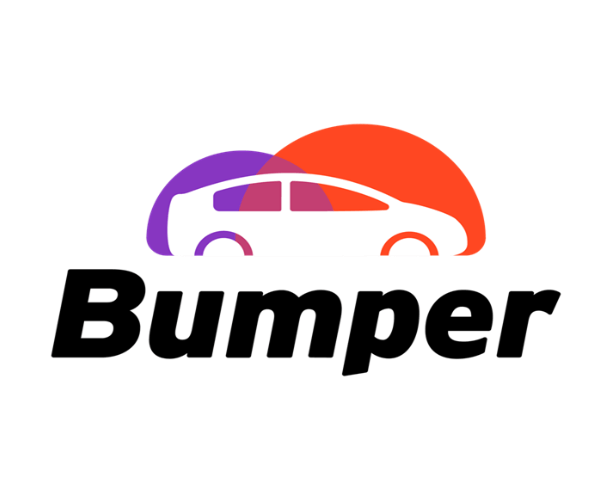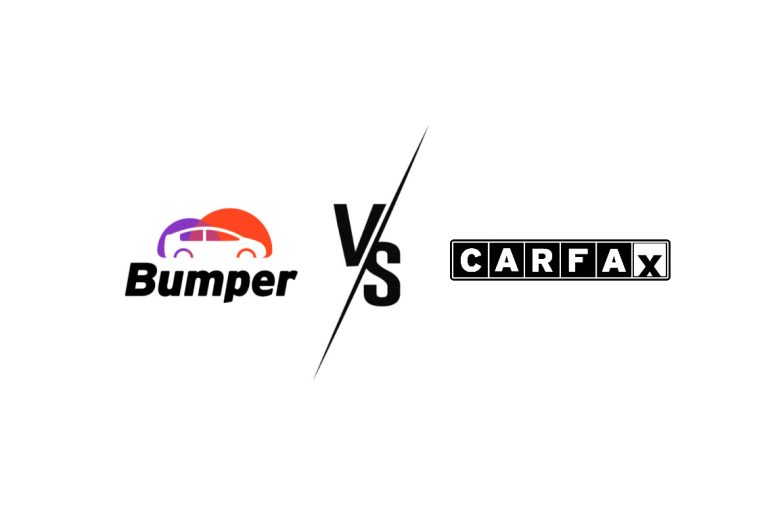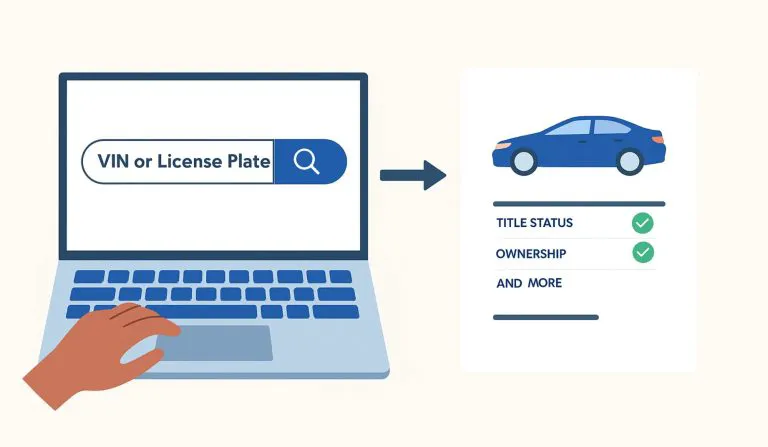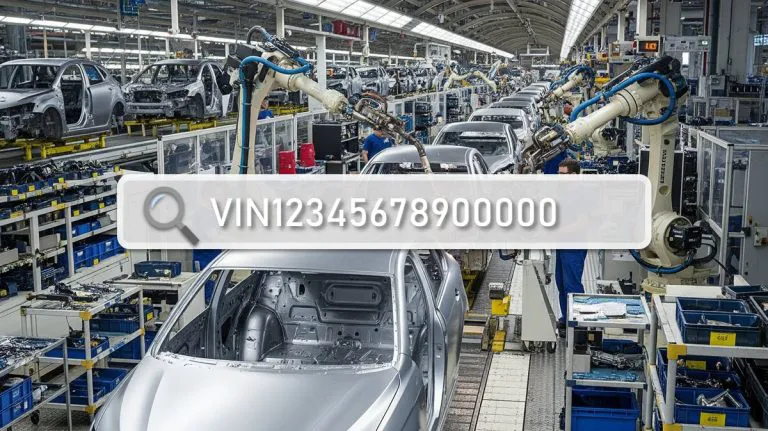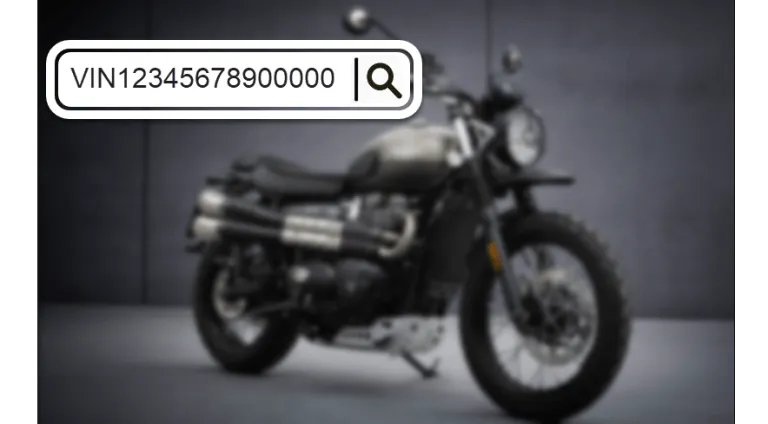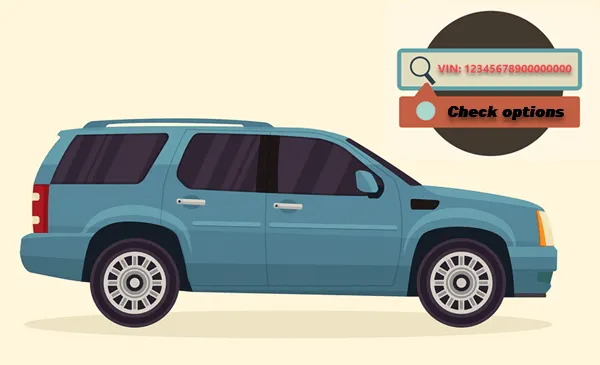How to Find Dealer Invoice Price by VIN (2025)
Ever wondered how much dealers actually pay for cars? Here's how to find out.
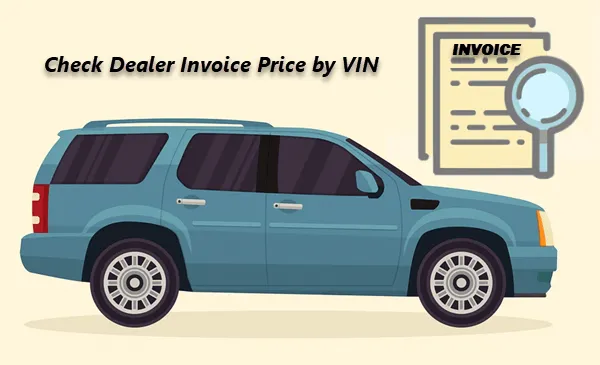
When you’re shopping for a new car, you may naturally wonder about the dealer’s real cost on it. That number is called the dealer invoice price. Not long ago, it was the baseline for negotiations: buyers knew it, referenced it, and often considered it a win if they could get close to it.
These days, it seems nobody bothers with invoice pricing anymore – everyone just works off that inflated sticker price you know as MSRP.
But knowing the dealer invoice is still valuable. It gives you a realistic sense of where the dealer starts and how much room there might be to negotiate. In this article, we will show you 4 reliable ways to get the invoice price for a car. Read on!
Quick guide: How to get invoice price
Method 1: Run a VIN check with Bumper
Whether you’re just looking for dealer invoice prices or researching a car all around, Bumper is a solid choice. By tapping data from DMV, dealerships, sales transactions and a wide range of other sources, it is essentially a 3-in-1 tool: VIN decoder, vehicle history, and marketplace data all in one place. This means with just a VIN number, you can get the actual invoice for that specific car (i.e. the real dealer cost with all its options as opposed to generic estimates).
Beyond invoice pricing, Bumper also shows current market value and vehicle history that provide you with valuable insights into the car’s true worth and your negotiating position.
Here is how to get the dealer cost for your car with Bumper:
- Go to Bumper’s Official Website.
- Enter the VIN into the search box and hit Enter.
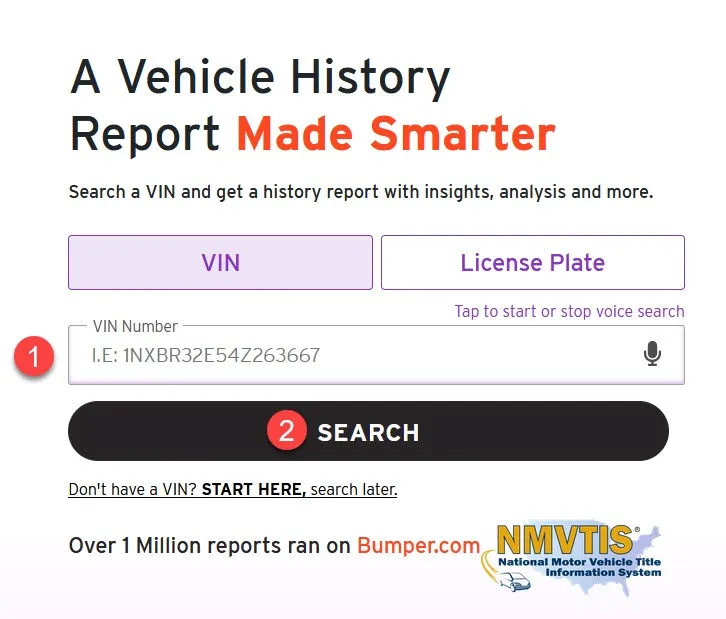
- Bumper will start checking your VIN against millions of data sources in its database. Once it locates a match, it will compile the associated records into a report for you.
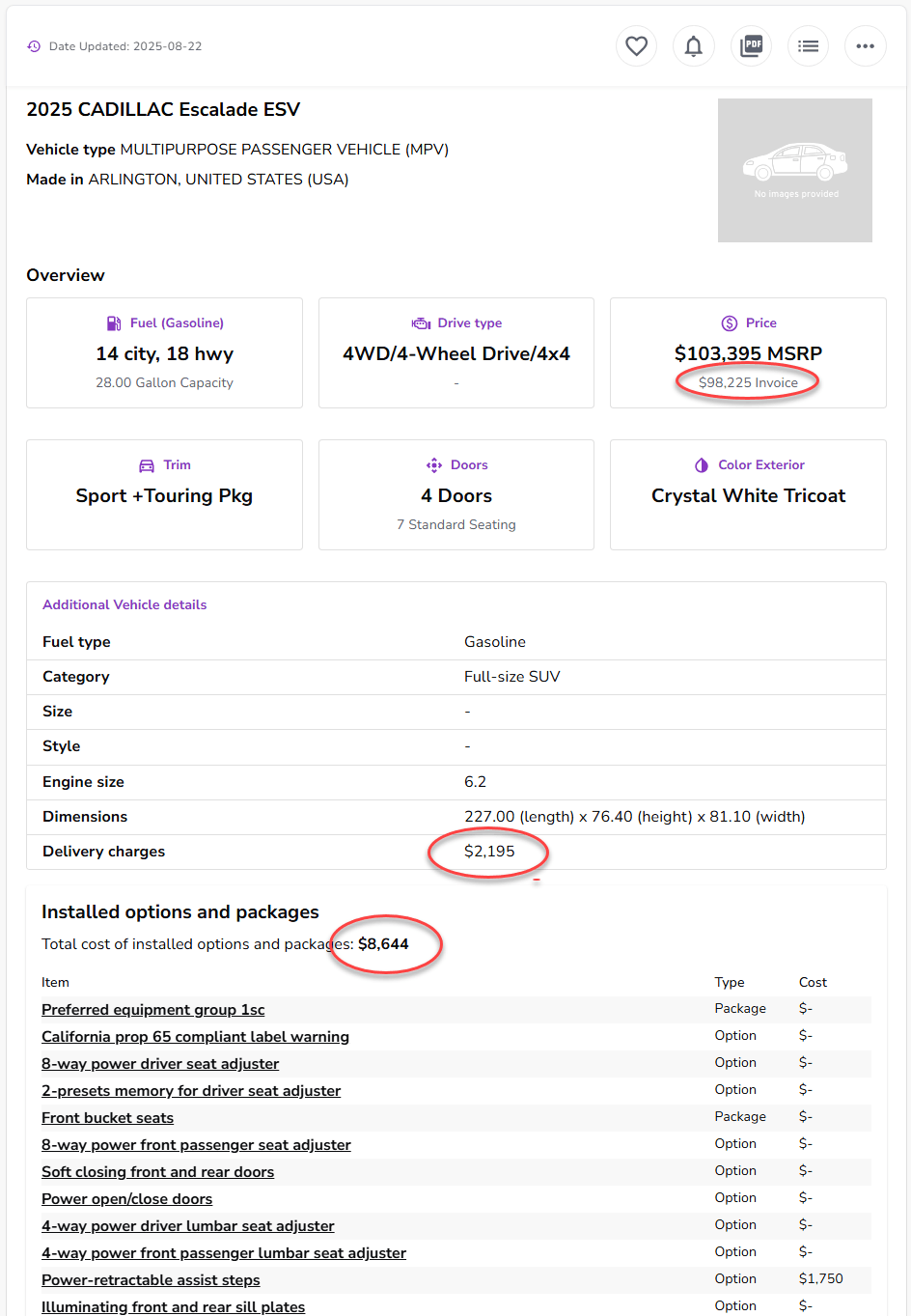
How to read a Bumper report:
As you can see from above, this is a Bumper report (partial) for a 2025 Cadillac Escalade ESV. Here’s how to read the sections you might be interested in:
- Check if you can negotiate:
- Calculate the difference between MSRP and invoice price to see the dealer’s margin.
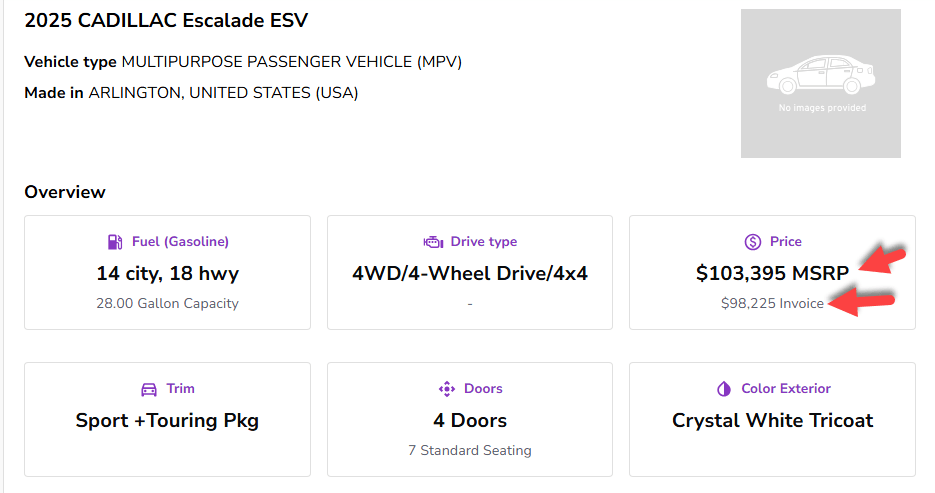
In this example: $103,395 – $98,225 = $5,170 (5% margin). For luxury SUVs, you typically see 6-10% margins. At 5%, this dealer doesn’t have much wiggle room. You might save a few hundred bucks, but don’t walk in expecting thousands off. - Look for market value. If it’s higher than MSRP, dealers have pricing power.
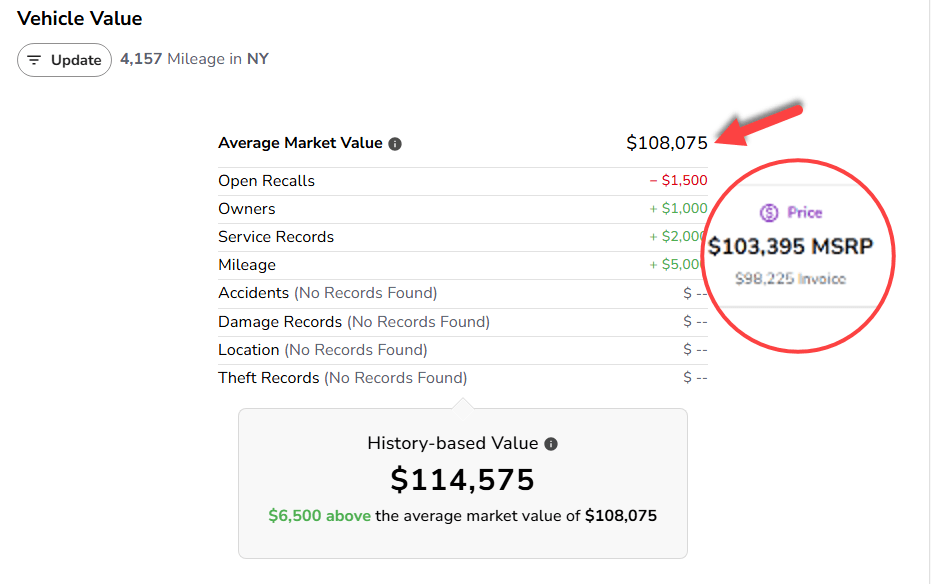
In this example: Market value is $108,075 while MSRP is $103,395. That means people are actually paying $4,680 over sticker price. When you see this, you should expect less room for negotiation and focus on avoiding extra fees.
- Calculate the difference between MSRP and invoice price to see the dealer’s margin.
- See what drives the cost:
Look at the options list to find expensive add-ons{{Bumper’s “options” breakdown may include both factory options and dealer add-ons.}}.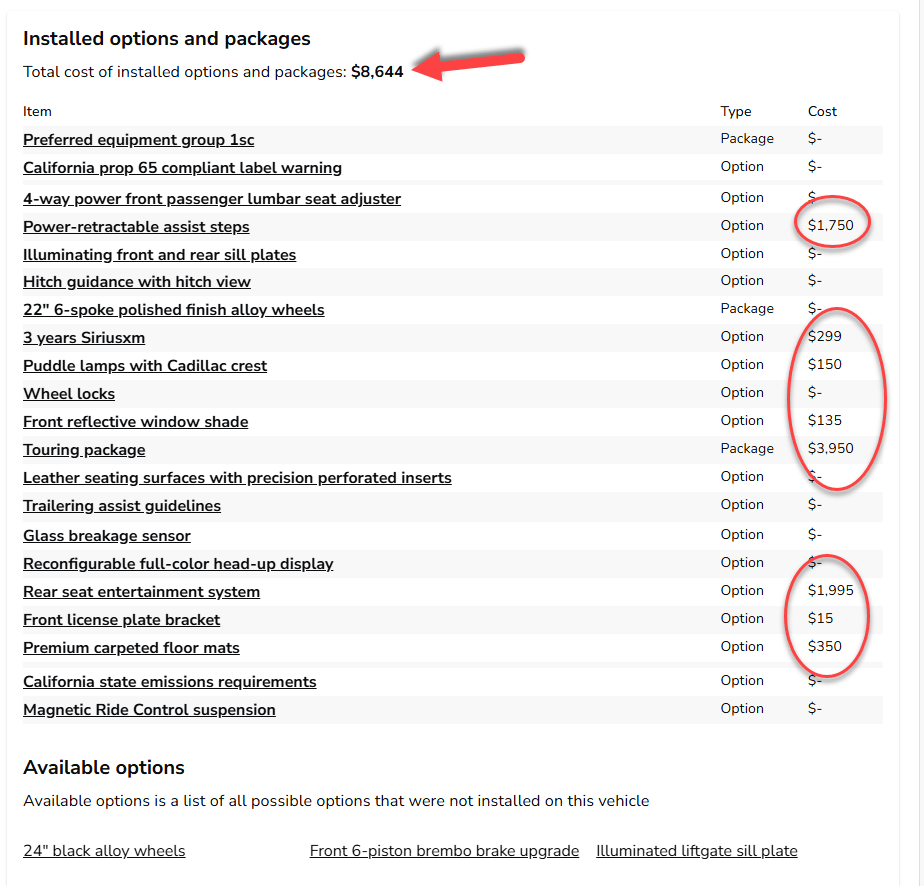
This car has: $8,644 in options, including a $3,950 package and $1,995 option. Dealers typically make higher profits on options, so if you see a heavily optioned car like this, you can use it as leverage to negotiate a better price or, instead, ask about similar cars with fewer options. - Plan what you’ll really spend:
If you find an ownership costs section, use it to budget beyond the purchase price.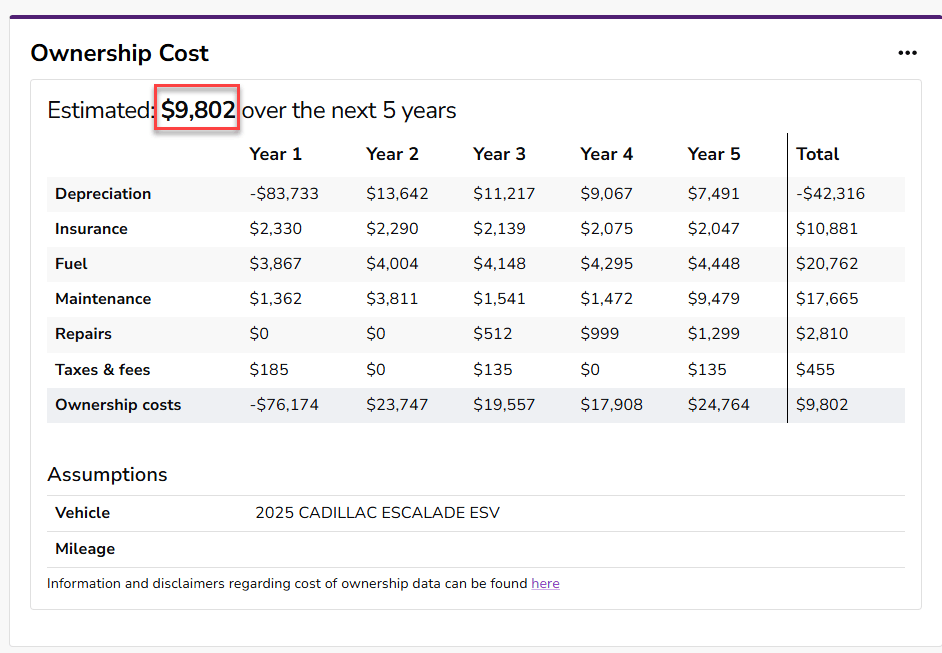
What you’ll discover here: $9,802 over 5 years, but you’ll lose $83,733 in the first year alone. If you see depreciation this steep, you may want to consider leasing instead of buying.
Bottom line:
Market value tells the real story. When it exceeds MSRP like this example ($108,075 vs $103,395), you’re in a seller’s market where dealers hold all the cards. The invoice data is still valuable for understanding the dealer’s position and avoiding inflated markups, but don’t expect invoice-level deals. In markets like this, paying MSRP without extra fees is actually a solid outcome.
Method 2: Get the invoice price through J.D. Power
J.D. Power doesn’t support VIN-based invoice lookups, which means you can’t get pricing for a specific car sitting on a dealer lot. However, if you’re in the research phase and haven’t settled on a particular car yet, it could be a useful vehicle configurator.
With J.D. Power, you build out the car you want by selecting trim, options, and packages, then it shows you both MSRP and invoice pricing broken down by component, so you can see what the dealer pays for each part.
Here’s how to use it:
- Go to JD Power’s official website.
- Select the vehicle type (e.g. Autos if you’re shopping for a car) and click Choose a Make.

- Select from the list of manufacturers and click on it.
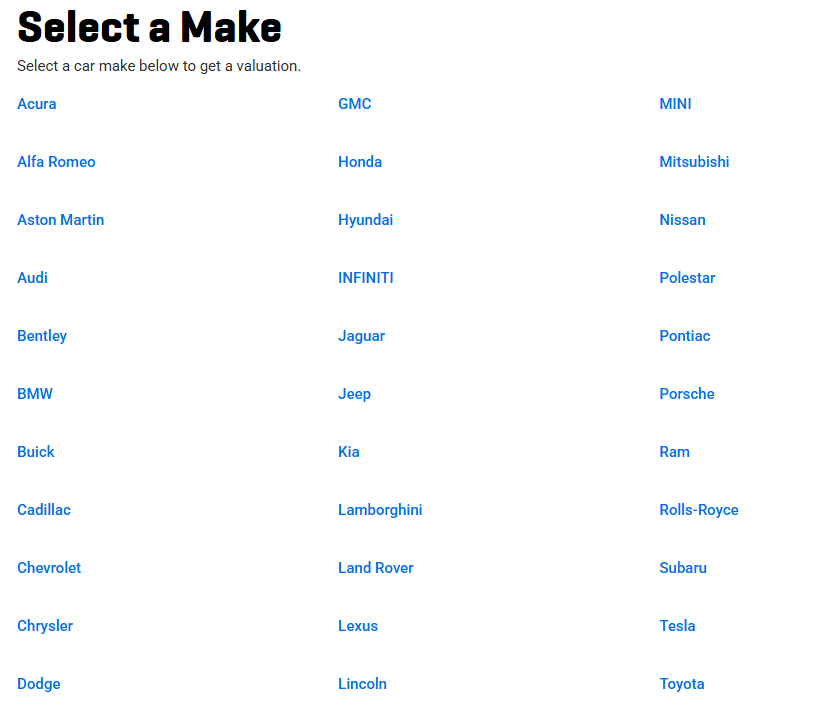
- Pick your model and year to narrow down to the specific vehicle you’re considering.
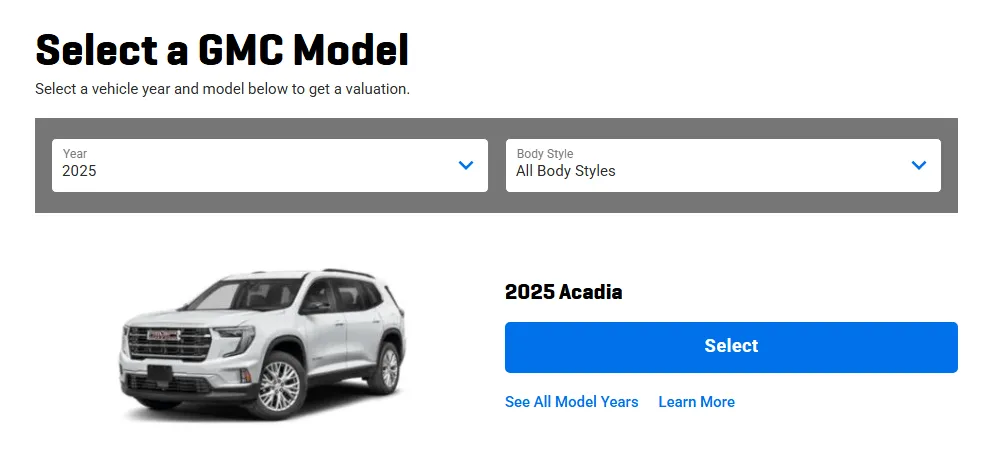
- You’ll see two options:
- “Price with standard equipment” for base pricing
- “Select your options”
Choose either option, then click “Next”.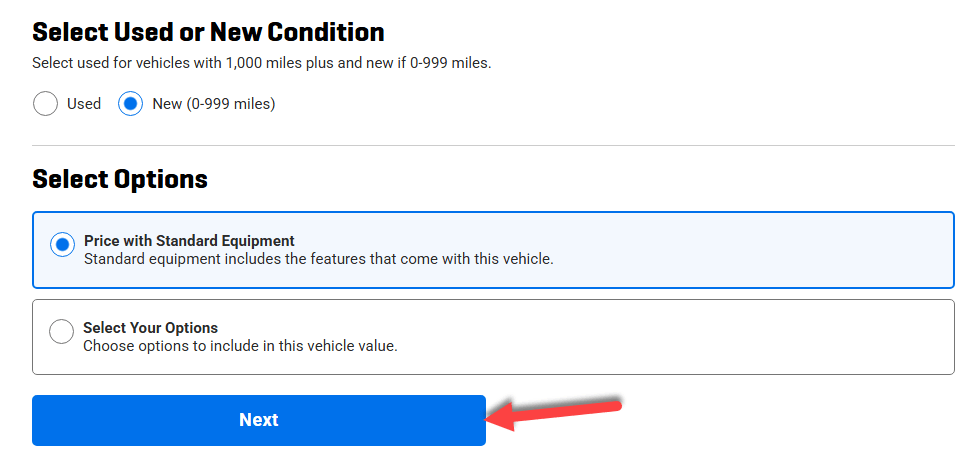
- Review the pricing breakdown. J.D. Power will display both MSRP and invoice pricing for your configured vehicle, showing the base price plus individual costs for each option you selected.
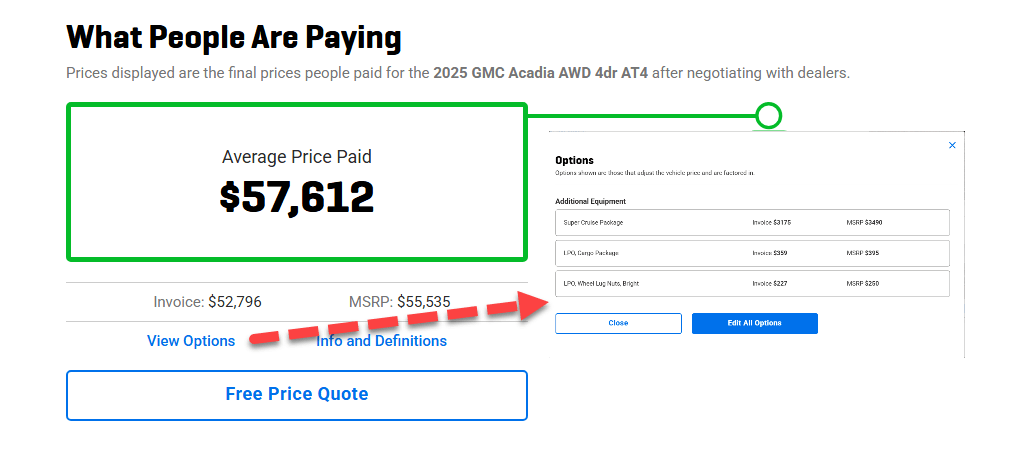
Method 3: Ask the dealership
Another feasible way to get a car’s invoice price is to request it from the dealer. While dealerships aren’t required to share this information, many will provide it as part of their sales process or to build trust with serious buyers.

Responses vary quite a bit from dealer to dealer. Some will readily pull out the invoice paperwork and walk through it with you. Others will decline and steer the conversation toward market pricing instead. You might also encounter dealers who share partial information – they might show you the base vehicle invoice while keeping manufacturer incentive details to themselves.
If they do show you invoice documentation, you’ll typically see the manufacturer’s official paperwork that breaks down the base vehicle cost, individual options with their prices, and the destination charge. Some dealers will pull this up on their computer system, while others might have printed copies. Remember to ask for a printout or email if they’re showing you screen information.
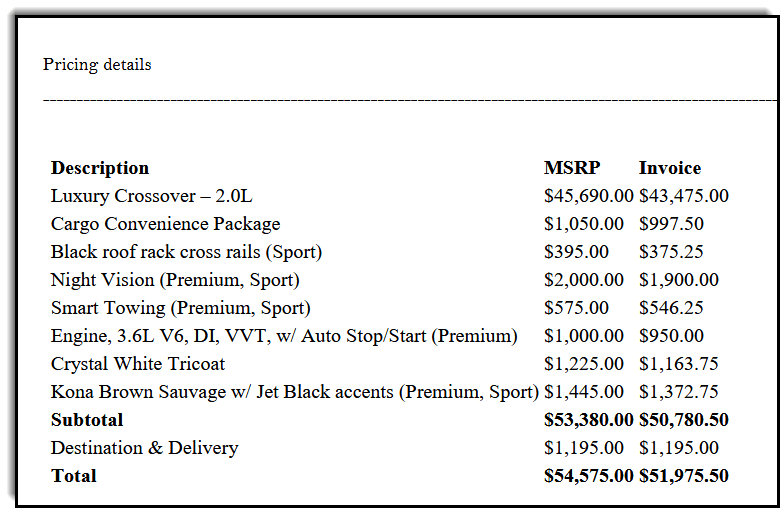
If they won’t show you the complete invoice, ask about individual option costs instead. Partial information is still something and you can weigh it against what you’ve learned from other sources.
Method 4: Google
Last but not least, there’s Google. With some digging, you may potentially unearth dealers advertising invoice prices in promotions, buyers sharing actual purchase amounts in forums, and occasional pricing documents from industry sources.
Here are some of the search techniques that work:
- Be specific with your terms. Use year, make, model, and trim (e.g. 2025 Honda Accord EX-L invoice price) rather than generic searches. Note that checking the exact trim level is crucial as different trim levels vary by thousands of dollars.
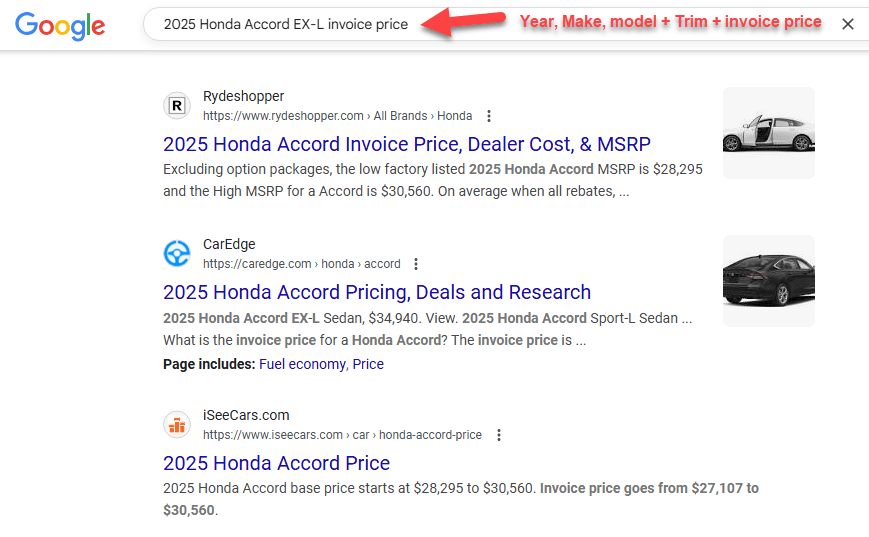
- Try alternative terms. Apart from “invoice price”, also try “dealer cost,” “factory invoice,” or “price sheet.” Forums, dealers, and industry documents often use different words for the same pricing information.
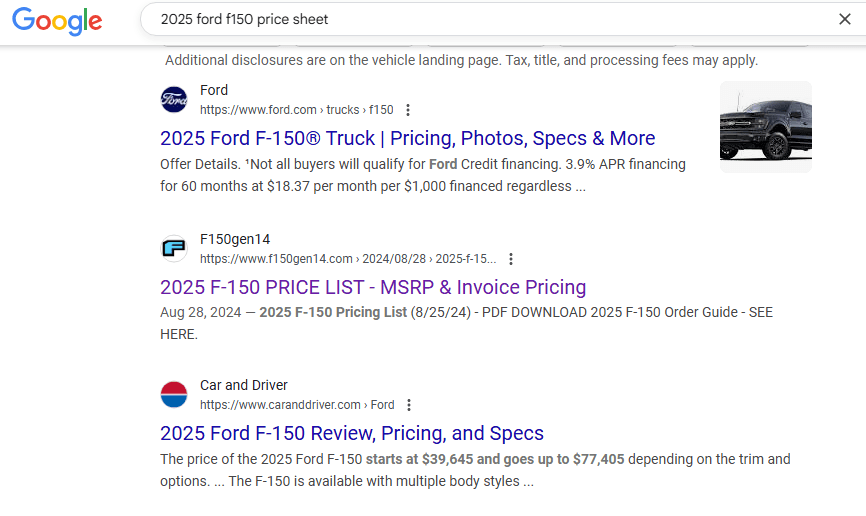
- Search for documents. Add “filetype:pdf” or just “pdf” to find pricing documents that occasionally surface online.
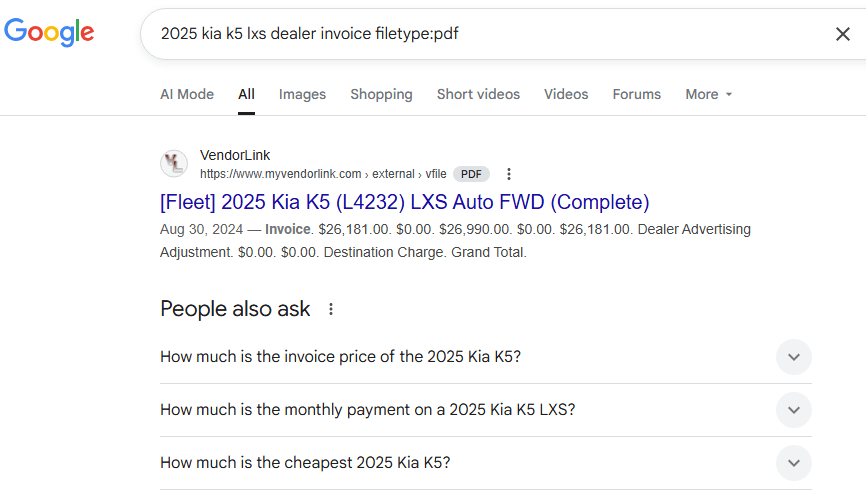
For example, if you Google “2025 Ford Mustang invoice price,” you may come across dealers advertising invoice pricing and MSRPs:
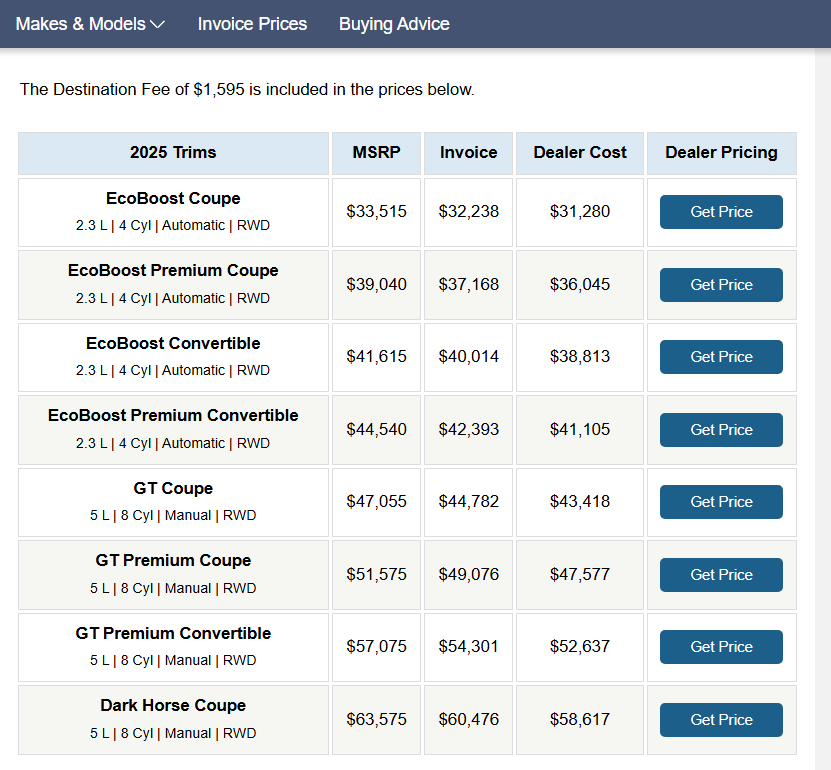
But if you try a different combination, such as “2025 Ford Mustang factory cost pdf”, you may discover internal dealer pricing documents that show the actual manufacturer invoice costs for different configurations, trim levels, and options{{Since it’s proprietary business information, actual pricing lists won’t be shared in the article.}}.
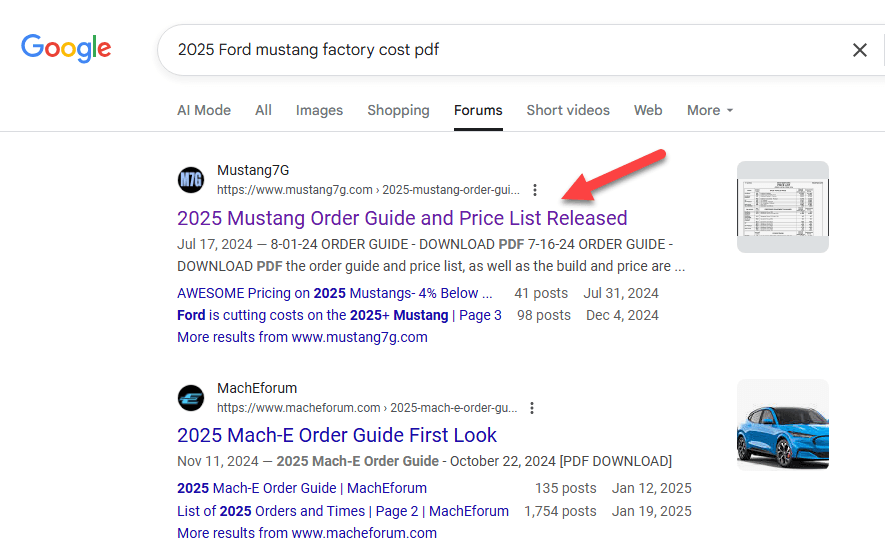
What is the dealer invoice price?
The dealer invoice price (sometimes referred to as dealer cost) is the amount the manufacturer bills the dealer for a vehicle. On paper, it looks like the dealer’s cost before selling the car. At its simplest, a dealer’s profit formula may look like this:
Profit = Selling Price – Invoice Price (cost)
For example, if a dealer’s invoice is $38,000 and they sell the car at $40,000, the apparent profit is $2,000.
However, the truth is, the invoice doesn’t always reflect the dealer’s true cost. Beyond the basic markup, dealers have various ways to reduce their net cost and increase profit:
- Financing: Loan rate markups
- Manufacturer programs: Holdbacks{{Holdbacks: A percentage of the MSRP or invoice (commonly 2–3%) that the manufacturer returns to the dealer after the sale.}}, volume bonuses{{Volume bonuses: Extra payments dealers receive for hitting monthly or quarterly sales targets}}, and factory rebates{{Factory rebates: Discounts or credits the manufacturer offers directly to the dealer.}}
- Add-ons: Extended warranties, services, and accessories
Because these profit sources are invisible to consumers, a dealer can sell “at invoice” and still make money. Still, it is the closest thing you can get to gauge how far the dealer’s MSRP sits above the baseline.
FAQs
1. What does a dealer invoice include?
The dealer invoice price typically includes:
- Base vehicle cost – the model’s standard equipment and trim.
- Factory-installed options and packages – technology, towing, appearance, or comfort upgrades.
- Destination charge – the manufacturer’s flat fee for transporting the vehicle to the dealership.
- Regional advertising or assessments – fees some automakers pass along to dealers.
It usually does not include dealer add-ons or documentation fees tacked on by the dealership.
2. Dealer invoice price VS MSRP: What is the difference?
MSRP (Manufacturer’s Suggested Retail Price) is exactly what it sounds like: the price at which the manufacturer recommends the dealer sell the car.
MSRP is usually about 2% to 8% higher than invoice, and can be even more for luxury or heavily optioned vehicles. Over time, MSRP has become what everyone focuses on in negotiations, even though the invoice used to be the baseline.
Related: How to Find Original MSRP by VIN
3. Does knowing the dealer invoice price mean I can buy at that price?
Not necessarily. Even if you find the exact dealer invoice price, it doesn’t guarantee the dealer will sell at that price. What you’ll actually pay depends largely on the model’s popularity, supply availability, and current manufacturer incentives. However, having invoice information gives you valuable insight into their cost position and puts you in a better negotiating position than working from the dealer’s asking price.

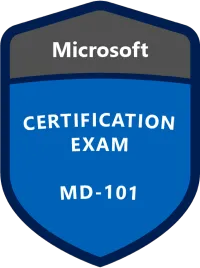
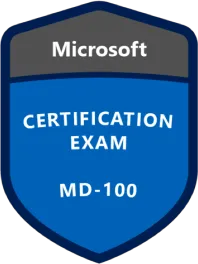

 View all of Enya Zhang's posts.
View all of Enya Zhang's posts.